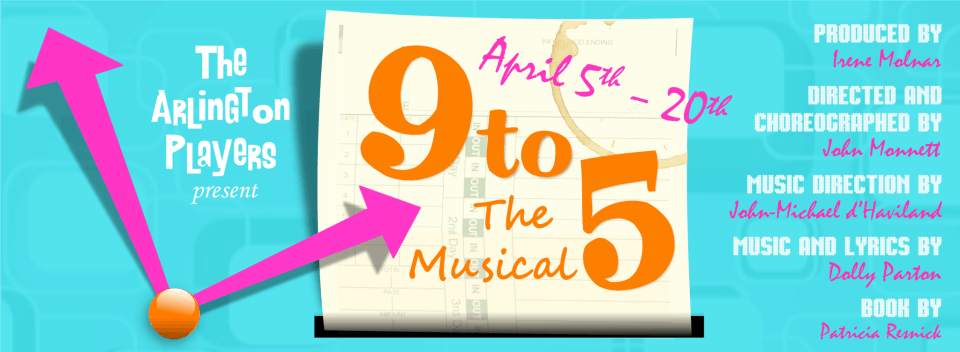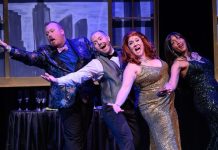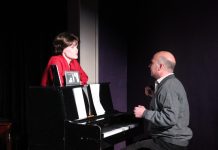The Arlington Players (TAP) opens its spring production this weekend, with the area premiere of 9 to 5. Based on the popular 1980 movie of the same name, the stage show tells the hilarious story of how three women use wit and will to triumph over their male chauvinist boss. Fortunately for theater audiences, the musical includes the added treat of catchy Dolly Parton songs and dancing in the workplace.
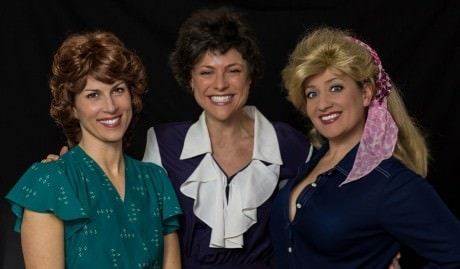
When the musical opened on Broadway in April 2009, it received 15 Drama Desk Award nominations – the most received by a production in a single year – as well as four Tony Awards nominations. Unfortunately, 9 to 5 was largely overshadowed by the success of Next to Normal and Billy Elliot when the theatre awards were handed out.
The TAP production, while staying true to the original, takes Community Theatre up a notch with an ambitious approach to its technical elements. As TAP puts the finishing tweaks on its production, I asked Director John Monnett to talk about the show’s buzz in the community and the excitement around bringing something new and unique to local audiences
Karen: This production team has worked together many times and has an impressive resume. Who are your team members, and what are some of your team’s other TAP productions that audiences may have seen?

John: Producer Irene Molnar, Music Director John-Michael D’Haviland, Stage Manager Terri Carnahan and I have worked together on seven shows at TAP (including this one); Terri has stage managed all except one. These are:
2003 – Kiss Me Kate*
2004 – Guys and Dolls
2006 – Fiddler on the Roof
2007 – Thoroughly Modern Millie*
2008 – Sweet Smell of Success**
2011 – 42nd Street
2013 – 9 to 5: the Musical
(*WATCH Award winners for Outstanding Musical; **WATCH nomination for Outstanding Musical).
Why did you want to direct 9 to 5?
A friend of mine who had seen the Broadway production played me the original cast recording when it first came out. I was struck with the music and how it captured the mood of these characters that were well known from the 1980 movie. I remember seeing the movie when it first came out and laughing hysterically without any real point of reference about working in an office (I was 13), so I knew the story had broader appeal. happened to catch the movie about a year ago on TCM and remarked how well the script still stands 30+ years later, and with my own now personal experience in the workforce for 20+ years (yikes!).
Whenever I can listen to the music and see the story on stage, I know it’s a show that I should do. Like both Thoroughly Modern Millie and Sweet Smell of Success a few years ago, this one just played in my head whenever I listened to it. As I was looking for my next project, 9 to 5 was definitely on my short list. I had done a lot of traditional musicals, so was looking for a pop/rock score and a contemporary script. So when the opportunity arose, I put this forward and it was selected. I think that picking it seemed a no-brainer given the immense female talent in our area. And while I may not be the obvious choice to direct a feminist piece, I think the themes of the show transcend gender.
There was tremendous buzz about this show in the performing community and you had huge crowds at auditions. Why do you think this show appeals to performers?
As a director, I’m always afraid that no one will come to auditions. So I was humbled that this show seemed to generate such excitement in our theater community. I think it has a lot of name recognition because of the movie, and the fact that no one had done the show in our area generated a lot of interest. Plus, the show is a tour de force for women – four really incredible roles which allow performers who usually compete with each other to finally work together. The show also has a great score – a mix of pop/gospel/Broadway tunes that make for fun production numbers for the ensemble and great solos for the principals.
Tell us about your lead characters.
Elizabeth Yeats plays Violet Newstead, the role originated by Lily Tomlin in the movie and Allison Janney on Broadway. Violet is a recently widowed single mother beating her head against the glass ceiling trying to become “one of the boys.” The role requires an incredible actress with a dry wit and impeccable timing, who can belt and sing coloratura soprano, and who drives the story. Not an easy role to cast and Elizabeth is a remarkable artist – it’s been such a gift to build a show on such talented shoulders.
Jennifer Lambert fills the role created by Dolly Parton in the movie and Megan Hilty on Broadway – and those are some big shoes to fill! The character of Doralee Rhodes is the sweet and sexy secretary with a heart of gold and flair for roping. Playing a character that is such a thinly veiled facsimile of an iconic personality like Dolly Parton makes it a challenge to make the role your own, and Jennifer has done so beyond my wildest hopes – and belting in a country western style to boot.
Jane Fonda originated the role of displaced homemaker Judy Bernly thrown back into the workforce after her husband dumps her for a younger woman. Stephanie J. Block played Judy on Broadway and Allison Block (no relation!) brings a big heart and big voice to this character. Playing this all too common character – a woman who finds the will to stand up for herself once she breaks the shackles that society and her heart have put upon her – is a challenge for many modern women who must try to keep the character real without being pitiful. But the song “Get Out and Stay Out” is such a great anthem of discovery and liberation, and probably the most difficult solo in the show, which our Ms. Block delivers.
In the role of the “sexist, egotistical, lying, hypocritical bigot” Franklin Hart, Jr., created with gusto by Dabney Coleman, is Russell Kopp. Playing a despicable character is a challenge, but he provides the foil for these women and makes it easy for us to root for them in the crazy antics that transpire during the show.
The other major player is Hart’s “Girl Friday” Roz Keith, played by Annie Ermlick. In what could be a one note role, the office bully, Annie has carved a remarkable character who matches wits with the other women in the office, but reveals another side of a woman’s heart in her solo moments.
What were you looking for in these characters that these actors bring to their roles?
We wanted team players who were willing to respect the original material but still make it their own. The script and score provide lots of opportunity for this.
There is tremendous chemistry between the three leading women, Violet, Doralee, and Judy. Did this come naturally, or did you all work on these relationships in rehearsal?
I think this is the first time Elizabeth, Jennifer, and Allison have worked together, although I believe they had all been introduced before via mutual friends who’ve worked in prior shows. But they have been so generous with each other as they explored these characters – the laughter in the scene in Violet’s living room comes naturally without any outside influences. These women have respected each other from day one and seem to just enjoying playing together. They root for each other just as their characters do, which has made my job so much easier. They (and everyone in this cast) have been a delight to work with.
The character of Franklin Hart is “a sexist, egotistical, lying, hypocritical bigot.” How did you – as a director, and Russell – as an actor, work to keep Hart from being one-dimensional? Does Hart have any redeeming qualities?
Obviously, this is the big challenge for an actor to play a character who treats women so poorly. I tell actors playing despicable characters that the key is to remember that the character doesn’t see his actions as despicable. That’s for the audience to interpret. And as an actor, it’s critical to not start judging the character for his flaws – just play it for what it is and let the story unfold.
If Hart has any redeeming qualities they aren’t explored here. This story is about the women, and his role is to provide the catalyst towards their own liberation from his domination in the workplace.
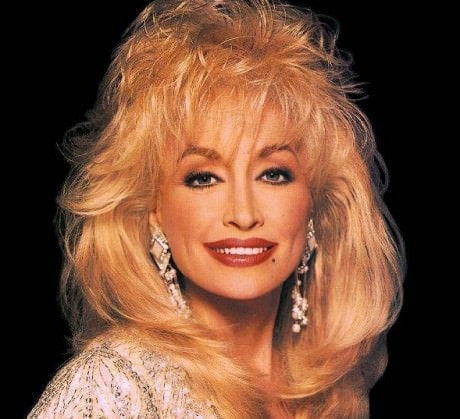
The show’s music was written by Dolly Parton. How would you describe the score she has written for the show?
While she is a legend in Country Western music – and maybe pop music due to the crossover success of the title song, – I think she did a remarkable job on her first Broadway score, and I’d love to see her do another. As a songwriter she is a gifted storyteller, so her music lends itself to a Broadway musical. Each character has a clear point of view, and the songs state honestly and clearly the emotions being experienced throughout the show.
The musical score is difficult to sing. How did J. Michael approach this? Did the cast and orchestra need extra rehearsals to learn this music?
Honestly, I don’t think we realized how difficult the music was going to be when we started. The cast have been troopers, and we have really spent more time working out the particular nuances of this score than we have in some of the more familiar and traditional scores in our past shows. J. Michael always puts together an amazing orchestra using the best musicians for each particular score. He has more experience than I do with pop/Broadway scores, and I’m grateful for his expertise as we have navigated the waters of Dollywood.
One of the biggest challenges has been dealing with cuts in the score against the script or against the original Broadway score. The licensed version of the show was created during the National Tour, so it is somewhat different than what’s on the cast recording. We found discrepancies between the conductors score vs. the libretto the cast was using vs. the script, and we’ve needed to iron all that out. A challenge, but everyone has been great about working through these issues.
You are also the show’s choreographer. What is your vision for some of the show’s larger dance numbers such as “9 to 5,” “One of the Boys,” and “Change It“?
I like doing both elements as it allows for seamless transitions from scene to song to dance. I’ve also been watching MGM musicals my whole life and I love any opportunity to bring that joy to the stage in the shows I design. This is my first real pop musical, so it was fun to create a number to a pop song like “9 to 5” in the context of a stage story, introducing each character and keeping the stage vibrant with the mundane activities of waking up, getting dressed, and going to work.
“Change It” is just such a terrific song about empowerment, I wanted the number to build from the naturalness of the office but evolve into the joy these characters feel as they take charge of their environment.
“One of the Boys” is a fantasy sequence, so it allowed the freedom to do a production number outside the context of reality. I loved watching the Mitzi Gaynor specials during the 70s, and this number is my tribute to the variety shows of that era.

The TAP production of 9 to 5 features some unique and impressive technical elements. Why did your team decide to push the envelope in this area? What have been are the biggest challenges for the production team?
It’s always desirable to challenge yourself as an artist. This show in and of itself is a challenge: a pop score; memorable characters played by icons in the movie; and a script that could be perceived as dated. But it also required some technical challenges that TAP hasn’t undertaken in a while. Flying an actor hasn’t been done at the Thomas Jefferson Theater since Peter Pan in 1992. There aren’t many theaters in the area that can do this, so we decided this show provided a great opportunity to delight audiences with this effect.
You often take an unusual approach to scene changes in that you have the cast move a lot of the set pieces. Do you think this helps makes the running of the show more efficient? Describe how this works backstage.
The other major technical challenges in the modern musical are the transitions. In a Broadway production where they have hydraulic lifts, tracks, LED lights, etc., they can transition between scenes in minimal time and, as a result, the score provides 12-18 measures of transition music. When you don’t have the technical bells and whistles of a Broadway house (or a $6 million budget!), you learn to be creative.
In Sweet Smell of Success in 2008, we solved the transition issue with an ancient theater device, the periactoid (a periactoid is a moveable three-sided tower, often with casters on the base). In 9 to 5 we went minimalist with the set and are using lights and a scrim to mark transitions. The score gave us the clues to this solution, as most scenes end with a character deep in thought through song, so it seems natural to isolate them in a pool of light while we start the transition to the next scene. Having the audience escape into the moment is essential, so they don’t get caught up in an overly long scene change.
The key to making this work is designing the scene changes as you design the set, making the assignments early for the actors, and rehearsing them along with the scenes, songs and dances. The scene changes are choreographed so they require rehearsal before being performed in the theater. The cast makes fun of me for my “chair set” that we build in rehearsal (making everything out of the folding chairs in the rehearsal room), but by the time we get to the stage, these transitions are part of the show and we aren’t learning them (entirely) during tech week while we are getting used to costumes, props, lighting, etc.
Even though the show is a musical comedy, there is a very real theme that promotes feminism and equal right in the workplace. As a director, was it important to you to convey this message to the audience?
Yes, but as I said above, it’s also a comedy. I certainly won’t minimize the struggle for equal rights for women or anyone – we see this in the headlines daily. And the ERA which isn’t mentioned directly in the show was very much a hot topic in 1979 – and still is today. I think TAP audiences are sophisticated enough to see the parallels between today and 1979 and think about the very real issues this show depicts without me having to beat them over the head with it.
What is your favorite scene in the show, and why?
It’s too soon to have a favorite – and once I do, I never tell. But I think “Shine Like the Sun” is the most powerful song/scene in the show – it’s an anthem of liberation and self-empowerment; it shows the three women bonding as friends as they unite against the man who has made their lives difficult. The music just soars with emotion as the song climaxes and I have found myself getting choked up in rehearsal just thinking about what it will look like and sound like in the theater.
Aside from the cute story line and great music, what do you think audiences will enjoy most about this show?
I hope they will laugh and escape into the fantasy. I think as important as the themes and issues depicted in this show are, sometimes a musical comedy should just allow audiences to forget their own troubles for a couple hours.
What do you want audiences to take with them after seeing TAP’s 9 to 5?
I hope that they remember the movie fondly and enjoy reacquainting themselves with these characters and their antics. 1979 was a remarkable year with many historic milestones, but not dissimilar from today. Economic concerns impact us daily, but yet amidst these we find the need to laugh. 9 to 5 transcends its era and we can all relate to wanting to “stick it to the man.” I hope audiences will just let themselves enjoy the crazy antics of these characters. The show has serious message, but it is musical comedy, so it’s OK to use it as an escape.
9 to 5 will run on weekends (Fri-Sun) beginning this Friday, April 6, 2013 until April 20, 2013 at the Thomas Jefferson Community Theater – 125 S. Old Glebe Road, in Arlington, Virginia. Click here to purchase tickets.


